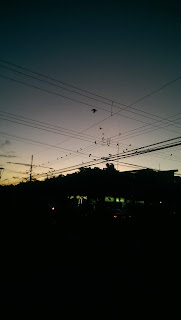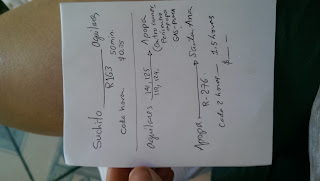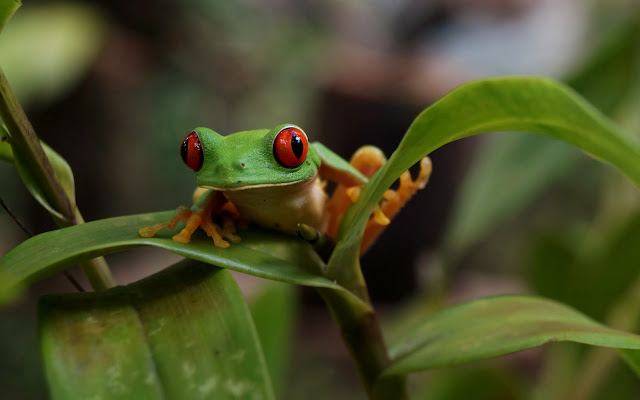Entering Costa Rica: Monteverde, San Jose, Quepos, Uvita and arriving in Drake Bay
Again
apologies for the lateness of this post. In the jungle it is easy to
lose track of time!
Continuing from last time.....
Time
was ticking- we were aiming for a volunteer project in Costa Rica, so
it was soon time to leave Nicaragua. We decided to skip Isla Ometepe
(one of the most popular destinations in Nicaragua), as we would be
returning to Nicaragua after volunteering in Costa Rica. So we headed
off on a chicken bus to Rivas, with hordes of other travellers mostly
on their way to Ometepe. A couple of French girls invited us to share
their taxi to the border and caused us a great amount of stress when
we found that they were heading to Ometepe instead. Needless to say,
we wasted some money, half an hour and many frustrated/angry words on
the taxi back to Rivas and were unceremoniously dumped on a street
next to a man selling puppies in a cage, to wait for the next bus to
the border.
 |
| Great Tailed Grackles at dusk in the central park of Liberia |
Once
we got on the bus, things went pretty smoothly. By now, we are used
to being heckled by lads on bicycles telling us the border is too far
to walk and that they should take us there instead. To get into Costa
Rica, it is required to show proof of leaving the country.
Fortunately (and perfectly legally), Copa airlines has a 48 hour
cancellation policy, where you can reserve a seat on a flight which
is automatically cancelled. We showed our flight reservation at the
border and were waved through.
We
hopped on a bus to Liberia and were soon on our way. Staying
overnight in a hostel, we discovered what most Costa Rican cities are
like; basically, a run-down US town. Unlike Nicaragua and the other
countries we have visited so far, Costa Rica does not really have
markets, has very few street traders and buses are similar to the UK
with schedules.
The
next day we set off for Monteverde. Although we were told that the
bus may take 4 hours to get to La Irma, a cross roads where we would
catch bus up the mountain, the bus actually took 1 and a half hours.
We arrived at the cross roads at 11, despite the next bus being at 3.
After buying some ice cream from the conveniently located gas
station, we attempted to hitch-hike. We ended up getting a ride with
a family on their way to Monteverde who apparently ran a shuttle
business. We paid a fare comparable to a bus ticket, so it turned out
all right. The road up to Monteverde/ Santa Elena is steep, winding
and largely unpaved. As we approached the Nature reserves, we began
to see banners next to the roads advertising night walks, aerial
tours and hostels. The town of Santa Elena itself was nothing
special. Completely aimed at tourists, there were no cheap places to
eat and even the supermarkets were expensive. Fortunately our hostel
had a decent kitchen, so we were able to cook for ourselves.
It
is recommended to visit at least one of the reserves in the area.
However, put off by the high entry price (ranging from $15 to $25)
and hordes of daily visitors, we never entered a single one.
We set off to find a fig tree near the town which you could
apparently climb. A 10 minute walk from the town, as soon as we left
the street we were surrounded by forest. We soon came across the
first fig tree and clambered up the inside. The next day we headed
off to the telephone pylons on top of a hill. I had read on a blog
about some paths around there that you could follow so we decided to
go and check it out.
We
walked up the horrible track up to the pylons, which was pretty
unexciting, although we did take a wrong turn and spotted an agouti
when cutting through someone's garden! We reached the top which was
covered in cloud and extremely windy. I’m sure the view would have
been good but it’s called “cloud” forest for a reason!
 |
| Cloud Forest |
We
continued along the path and stopped at the Green hermits gift shop.
We were invited in for a coffee and bought some jewellery. We then
continued down the path, which became pretty steep and slippery. The
path formed a loop at the bottom of the hill. We explored the forest.
Unfortunately we didn’t see many animals as the weather was poor.
It is also pretty hard to see animals in such dense undergrowth,
however, we did spot a pair of Black Guan (Chamaepetes unicolor)-
large, turkey sized birds that forage in trees.
 |
| Black Guan (Chamaepetes unicolor) |
The
next day we returned to the pylon hill and took a different path. We
walked through the pristine cloud forest for several hours and ended
up popping out in the Biological Station grounds. Unfortunately, we
didn’t see many animals on our walk. However, as we entered the
town, we saw an armadillo on the road next to a posh hotel!
 |
| Armadillo |
The next day we left Monteverde to head to San Jose, the capital of Costa Rica.
To
be perfectly honest, San Jose was nothing special. There were a few
nice pieces of architecture but unlike the other Central American
capital cities we have visited, it lacked the chaotic vibe with few
street sellers and no markets.
We
decided to head to Quepos; a town on the Pacific coast. Quepos is
most well-known for being the town near the most popular nature
reserve Manuel Antonio. However, on arrival, we decided not to go
there. Apparently the monkeys are really tame, to the point of
stealing peoples camera bags. About to spend a month in the jungle,
we decided not to pay for the park. On a couple of walks we took down
to the beach, we saw at least two species of monkeys, two species of
iguana and two species of basilisk.
We
then took the bus to Uvita, one of the next towns down the coast.
Walked to a waterfall and met our friends Ali and Jen who we had met
in Guatemala and were now volunteering at Flutterby House in Uvita.
The
next day it was off to Drake Bay on the Osa Peninsula to find our
Workaway!
We
left Uvita for an early bus to Palmar Norte. Having been told that
the bus would take 30 minutes, in normal Central American style, we
took multiple detours into the nearby villages and the trip tooke
about 1.5 hours instead! Once we were off the bus, we took a taxi to
a cash point to stock up, and then off to Sierpe to find a boat.
Drake
Bay is accessible by road, however, the bus apparently takes about 6
hours on muddy, bumpy roads. We opted for the boat, which turned out
to be a good choice. Although it cost $15, the boat ride was more of
an adventure-speedboat-tour. The boat weaved in and out of floating
vegetation iin the river, past mangroves and rainforest. We arrived
in the open sea and were ominously instructed to put on our life
jackets. The boat then sped out at top speed, dodging 5 ft waves and
heading straight towards some rocks. We zipped between two huge outcrops in
the water as waves broke next to us. Entering a sheltered bay, we
reached Drake Bay: a tourist town surrounded by primary and secondary rainforest.
After
leaving the boat, we headed off to our hostel for a couple of nights
of luxury before entering the jungle. Over the next couple of days we
hired a kayak and paddled out to a bay and walked along the coastal
path, spotting spider monkeys and toucans.
Stocking
up on some snacks, we were then ready to head into the jungle.
Hopefully the next blog won't take to long!
Feliz Viaje,
Bryony & Greg


Comments
Post a Comment